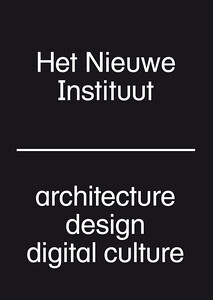Dutch contribution to the XXII Triennale di Milano
March 1–September 1, 2019
Viale Alemagna, 6
20121 Milan
Italy
Commissioner
Guus Beumer, Het Nieuwe Instituut
Curators
Angela Rui, Marina Otero Verzier, and Francien van Westrenen
I See That I See What You Don’t See, the Dutch contribution to the XXII Triennale di Milano, presents a layered, non-binary, and sometimes unexpected picture of the current multispecies relationship with darkness.
The project argues that today’s environment, where the borders between nature, ecology, technology and culture increasingly fade, is the result of persistent acts of design. Design is, therefore, positioned as a destructive as well as restorative endeavour, and one involved in the body’s changing relationship with the cycles of light and darkness.
For the XXII Triennale di Milano, the project deploys the panorama as a spatial model. Originally devised to create the illusion of a panoptic vision of the world, the panorama here articulates a fragmented representation of a contemporary landscape. This viewing mechanism acts as a carrier of research as well as a layered horizon condensing historical and current modes of seeing. Dioramas, projections, or smooth screens reveal films, performances, sound and scent-scapes conceived by the different contributors. These are openings to what we don’t generally get, or choose, to see; to cosmic, automated, and seemingly invisible environments that are designed and could, therefore, be redesigned.
Contributors
A Wildlife
Leanne Wijnsma
Investigating design’s ability to influence instinctual behaviour, Wijnsma’s installation presents three skin fragrances that act as invisible carriers of information.
Compression Cradle
Lucy McRae
Through a choreography of touch sensations, an affectionate squeezing machine assists in altering the gene expression of oxytocin, a hormone released in the brain, responsible for building trust and pair bonding.
You Will Not Be
Design Academy Eindhoven, Master Social Design
This performative research reflects on how narratives of self-optimisation and hyper-productivity shape design practice today.
Automated Landscapes
Research Department, Het Nieuwe Instituut
While some parts of the planet are affected by the recurrent presence of light, in others life evolves in its absence, around recurrent power outages and blackouts. Darkness is an unevenly distributed, and designed, condition.
Overview Effect
Academy of Urban Astronauts
The cosmic perspective and self-transcendent experience prompted by an Overview Effect is deployed here by the Academy of Urban Astronauts to set in motion a post-humanist worldview.
The Enigma of Vast Multiplicity
Aldo van Eyck
For the 1968 Triennale di Milano, with the theme The Big Number, Dutch architect Aldo van Eyck designed an exhibition that provided a disturbing view of the collapse of Western welfare societies. The exhibition, in the midst of the students protests that led to the occupation of the Triennale, never opened to the public.
The Unsleep
Danilo Correale
At the edge of sci-fi and reality, this photographic tale by Correale explores the relationship of sleep and wakefulness as modes of production and consumption that define a new chrono-imperialistic domain.
WifiTapestry
Richard Vijgen
By reacting to the wireless activity of a space, the dynamic wall by Vijgen renders visible the ever changing “landscape” of radio frequencies around us.
White Spots
Bregtje van der Haak
A collaborative multimedia project, White Spots analyses the global divide between the connected and unconnected worlds.
Los Angeles Blackout
Pascal van Hulst, Oscar Peña
Between historical account and urban legend, the reenactment of the Los Angeles Blackout focuses on how light pollution has reduced the human ability to connect with the broader system of the universe, and invites discussion on the symbolic currency of darkness within environmental consciousness.
Cosmism
Melvin Moti
Departing from a series of studies by Russian scientist Alexander Chizhevsky that presented a correlative increase in wars, revolutions and epidemics during years of high solar activity, the film by Moti explores the effect of cosmic radiation on human behaviour.
Darkness, as a First Act of Creation
Ramon Amaro
The performances, live DJ set, and audio-visual soundscape that compose this collaborative research project propose darkness not as a void or absence but, instead, a type of dark matter with generative and self-actualisation potential.
Public programme
In addition to the exhibition at La Triennale di Milano, the Dutch contribution will feature a parallel public program in Milan and Rotterdam. A series of conversations, celebrations, rituals, as well as sound and scent-scapes will take on the 24-hour economy and propose renewed spaces, rhythms and rights for more than human forms of cohabitation.
Vernissage: February 27–March 1
Ways of Seeing, Forms of Caring: April 9–14
Sidereal Times: May 26
Solstice: June 21
Darkness: September 1
I See That I See What You Don’t See is made possible with the generous support of the Dutch Ministry of Education, Culture and Science.

